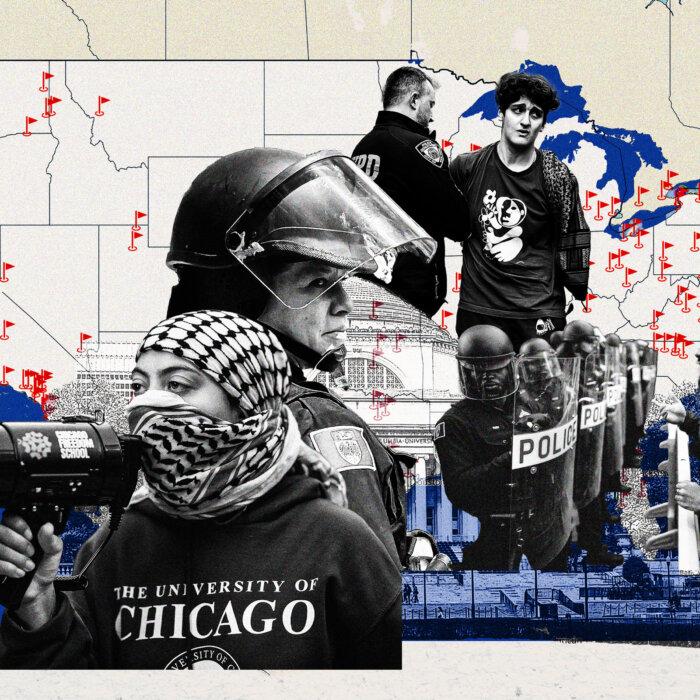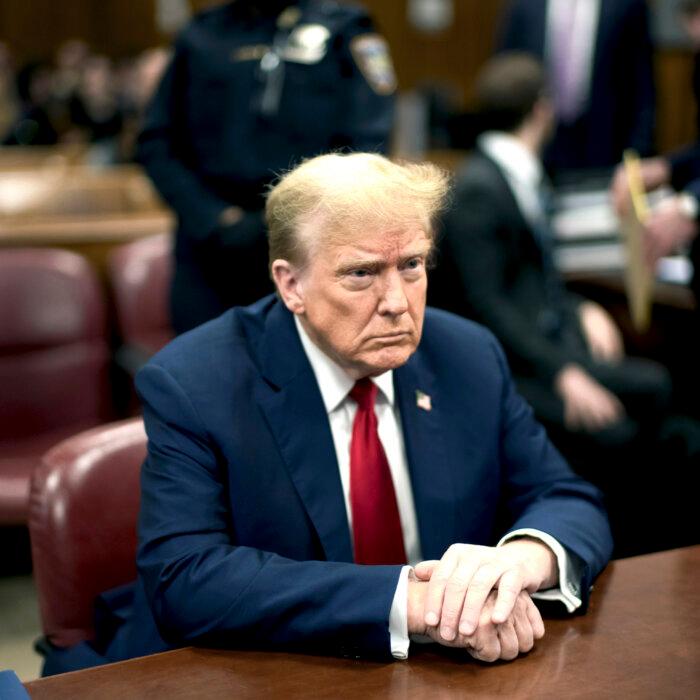A November election decades ago produced a clear winner in a hotly contested presidential race. Yet the popular vote immediately came under scrutiny in several states. In one, auditors discovered clear errors in tabulating vote totals. In others, credible evidence of election fraud was uncovered.
With a court challenge underway, electors from both parties met at a state capitol and conducted the electoral vote. Two certifications were forwarded to Washington: one declaring the Democratic candidate to be the victor, the other naming the Republican.
The Republican vice president—also a candidate in the race—convened a joint session of Congress on Jan. 6, 1961. Without fanfare, he moved to accept the Democratic slate of electors and set the Republican electors aside.
So ended the presidential election of 1960.
The state in question was Hawaii. The vice president was Richard Nixon, who ran against Democrat John F. Kennedy and would have won if as few as 11,000 votes spread over five battleground states had gone the other way.
Sixty years later, history nearly repeated itself as Republican electors from seven states sent alternative electoral certifications to Washington amid allegations of election fraud.
This time, the alternate slates were rejected. On Jan. 6, 2021, in a joint session presided over by Republican Vice President Mike Pence, also a candidate in the race, Congress certified Democrat candidate Joe Biden the winner over President Donald Trump.
Many Americans have no memory of the 1960 election, and few are likely aware of the striking similarities between it and the 2020 election. The Hawaii election provided the rationale for the alternate elector plan promoted by some associates of President Trump following the 2020 election.
Since last year, criminal prosecutions have been levied against Republicans who took part in the plan in Michigan, Georgia, Nevada, New Mexico, and Arizona. President Trump is facing related charges in a Washington federal court.
The two elections have much in common, yet the cases exhibit key differences that spelled success for the alternate electors in 1960 and defeat in 2020.
Recount in Progress
The first tally of votes in Hawaii during the 1960 election showed that Kennedy had won by 92 votes. After a second tabulation of the totals—not a recount of the ballots themselves—Nixon led by 141 votes.
Democrats petitioned a state circuit court for a recount. But Republican Lt. Gov. James Kealoha, who was acting governor at the time, had no legal authority to reopen the ballots or invalidate the results. So he certified Nixon as the winner.

Supporters of Democratic presidential candidate John F. Kennedy and reporters await the results of the second round of the presidential election, in Hyannis Port, Mass., on Nov. 8, 1960. (-/AFP via Getty Images)
After an initial audit, a judge ordered a full recount of the state’s ballots on Dec. 13, 1960, just six days before the electoral vote.
That court order was crucial to the success of Hawaii’s dual elector plan because it placed the outcome of the popular vote in legal limbo. While a winner had been certified, a state court had taken action that might lead to a different result.
Lawsuits were also filed to challenge aspects of the 2020 election. One was pending in Georgia, and one remained under appeal in Michigan, although the Michigan Supreme Court refused to halt certification of the popular vote on Dec. 9, 2020.
However, there was no court order in any state and no action by a state legislature to mandate a recount or to delay the certification of the election.
State-Certified Electors
In 1960, the ongoing recount created a dilemma for Hawaii’s acting governor. If only the Republican electors voted, Nixon would carry Hawaii even if Kennedy was later found to have won the most votes.
Yet federal law establishes the date for the electoral vote as “the first Monday after the second Wednesday in December” following the election. If there was no vote on Dec. 19, 1960, the brand-new state of Hawaii would miss out on its first presidential election.
So with the recount in progress, both sets of Hawaii electors met at Iolani Palace, the seat of the Hawaiian government. They voted for their respective candidates one minute apart. Kealoha signed two certificates of ascertainment and sent them to Washington.
A certificate of ascertainment states that the elector candidates pledged to a presidential candidate and the total number of votes received. The electors for the candidate who received the most votes are “elected” as presidential electors from their state.
A separate document, the electoral ballot, states the outcome of the electoral vote for that state.
The certificate of ascertainment is a second important difference between the 1960 and 2020 cases.
To be sure, some of the 2020 electors knew about the Hawaii case and used it as a rationale for their efforts. The Pennsylvania Republican Party issued a statement saying as much.

Michigan Lt. Gov. Garlin Gilchrist opens the state’s electoral college session at the state Capitol in Lansing, Michigan, on Dec. 14, 2020. (Carlos Osorio-Pool/Getty Images)
“While Democrat legal challenges were pending, Democratic presidential electors met to cast a conditional vote for John F. Kennedy to preserve their intent in the event of future favorable legal outcomes.”
In 2020, Republican electors in Pennsylvania and New Mexico added conditional language to their vote certifications, saying they were filed “on the understanding that it might later be determined that we are the duly elected and qualified Electors for President and Vice President of the United States of America” from their respective states.
There were other errors as well.
Only the Georgia and Wisconsin electors met and voted at their state capitols, as required by law. The documents sent by electors from Arizona, Georgia, Nevada, New Mexico, and Pennsylvania lacked the state’s seal, also a legal requirement.
In Georgia, New Mexico, and Pennsylvania, substitute electors were added without the approval of the state’s governor, also contrary to law. Finally, the documents from the Michigan and Wisconsin electors arrived in Washington after the filing deadline.
Congressional Certification
The Hawaii recount was completed on Dec. 28, 1960, showing that Kennedy had indeed won by 115 votes. Judge Ronald Jamieson declared Kennedy the winner, and Gov. William F. Quinn, a Republican, signed a third certificate of ascertainment sent to Washington on Jan. 4, 1961, this one stating that the Kennedy electors had been duly elected.
As vice president, Nixon made the suggestion that “the electors named in the certificate of the Governor of Hawaii dated January 4, 1961, be considered as the lawful electors from the State of Hawaii.” Congress did so without objection. Nixon said at the time that he had no intention of setting a precedent by unilaterally making the decision.
In 2020, President Trump urged Mr. Pence to reject the electoral ballots from the states in question on his own authority and send them back to the state legislatures for recertification. Mr. Pence has maintained that vice presidents don’t have that constitutional authority.
When Rep. Paul Gosar (R-Ariz.), along with other lawmakers, objected to accepting the certificate of ascertainment from Arizona, the House and Senate retired to their respective chambers to decide the matter.
Speaking against accepting the Arizona certificate, Rep. Steve Scalise (R-La.) argued that Arizona and other states had not followed constitutional procedure in filing their electoral results.
“Nowhere in Article II, Section 1 does it give the secretary of state of a State that ability [to select electors and send their ballots to Washington]; nowhere does it give the Governor that ability; nowhere does it give a court that ability,” he said. “It exclusively gives that ability to the legislatures. In fact, in most States, that is the process that was followed. But for those States, this wasn’t followed.”

Rep. Steve Scalise (R-La.) on Capitol Hill on Oct. 12, 2023. (Joe Raedle/Getty Images)
Arguing in favor of accepting the state-provided ballots, Rep. Zoe Lofgren (D-Calif.) said: “Under the [Electoral Count Act of 1887], if a Governor certifies a slate of electors and there are no competing slates in that State, the Governor-certified must be counted. Today, every single slate of electors won by Joe Biden, or won by Donald Trump, got their Governor’s certification. Not a single State submitted a competing slate. There is no dispute to resolve.”
Both the House and the Senate voted to accept the state-provided electoral ballots from Georgia, Pennsylvania, Michigan, Wisconsin, Nevada, Arizona, and New Mexico and certify Joe Biden as the winner of the electoral vote.
Aftermath
After Jan. 6, 1961, Hawaii’s alternate electors were largely forgotten. No one involved was charged with a crime. The public accepted the result, despite some known election irregularities.
Years later, Nixon, who went on to win the presidency in 1968 and was reelected in 1972, wrote about the 1960 contest, saying he had received clear evidence of election fraud in Illinois and Texas, states won by Kennedy.
Yet Nixon resisted the urging of associates to call for a recount, later saying, “The bitterness that would be engendered by such a maneuver on my part would, in my opinion, have done incalculable and lasting damage throughout the country.”
Nearly four years after the 2020 election, felony charges are pending against Republicans in Arizona, Georgia, Michigan, and Nevada related to their roles in the dual elector plan.
“We were told this was an appropriate process,” he said. “My background was enforcing the law, not breaking the law.”

Former President Donald Trump and attorney Susan Necheles attend his trial at Manhattan Criminal Court in New York City on May 7, 2024. (Win McNamee/Getty Images)
However, Laura Cox, former chair of the Michigan Republican Party, testified on Dec. 14, 2023, that she had questioned the plan from the start.
“They weren’t electors at the time, in my opinion,” she said.
Ms. Cox suggested that the electors instead sign a document pledging to cast electoral ballots for President Trump “if the election was overturned.”
Former Trump attorney Kenneth Chesebro pleaded guilty in a Georgia court in October 2023 to conspiracy to commit filing false documents; a condition of his plea agreement is that he will testify against other defendants.
President Trump and 17 others were indicted in Georgia for allegedly conspiring to unlawfully change the outcome of the election in the former president’s favor.
Presidents Trump and Biden are once again competing for the presidency in 2024.
Original News Source Link – Epoch Times
Running For Office? Conservative Campaign Consulting – Election Day Strategies!






